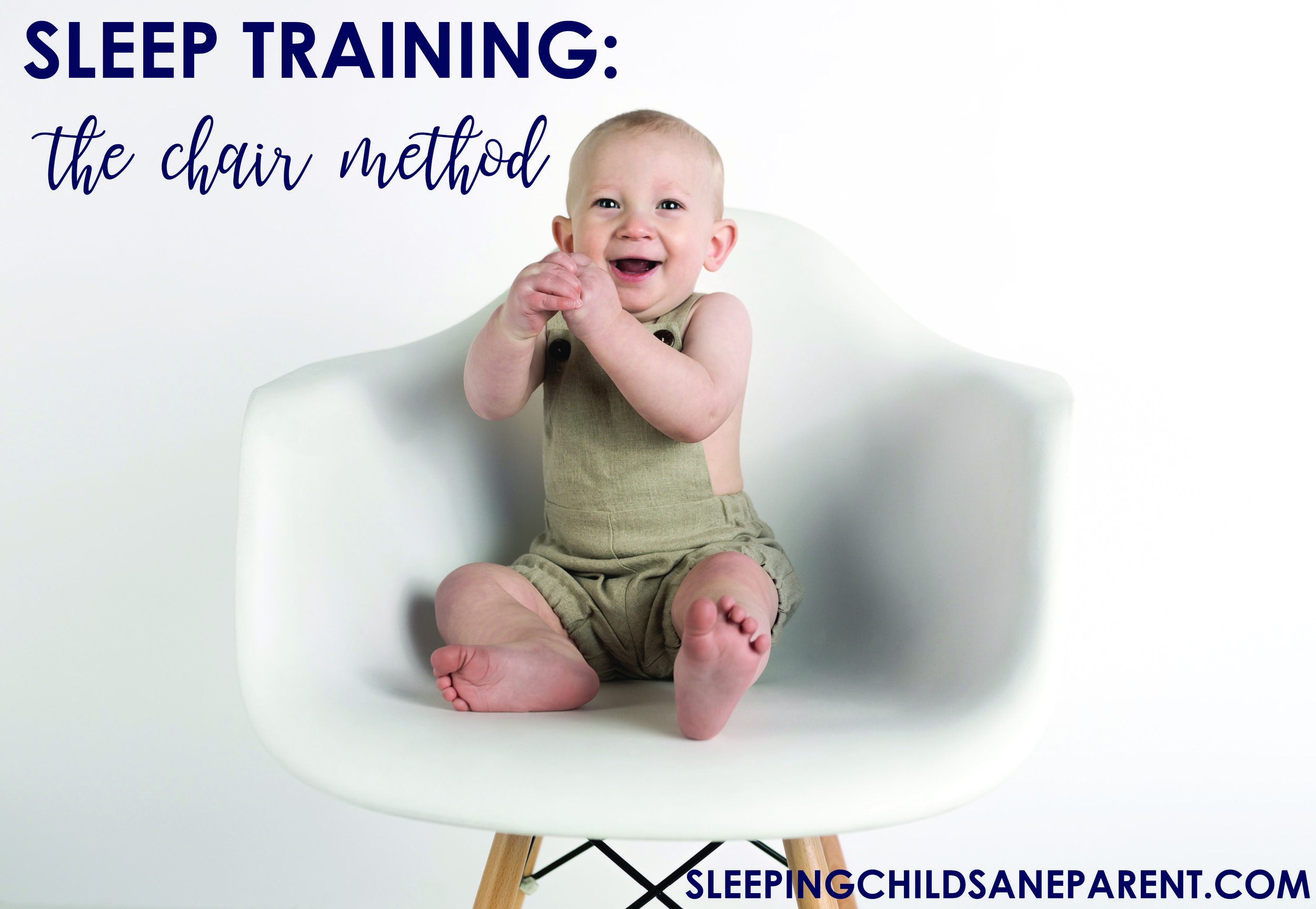There is no "one right way" to sleep train every baby and toddler out there. Some children are more stimulated by parental presence during sleep training; other children are more calmed by parental presence during sleep training. Some parents are more reassured the more involved they are in the training; other parents find it easier to be as removed from the training as possible. My sleep training series is designed to show you some of the options available for sleep training so that you can decide what will work best for you and your child. Click for other training methods.
*Formal sleep training methods are generally suggested for children who are at least four months old (adjusted).
Overview
The chair method involves sitting in a chair next to your child as he falls asleep. Every few days, you move the chair a bit further away from him so that he begins to learn 1) to fall asleep with less interaction with you, and 2) that even when you disappear from sight, you're still close by, so he can rest easy.
This Method is Good for:
Children who are calmed by parental presence during sleep training
Children who may be dealing with fears (of the dark, of monsters, of being alone, etc.)
Children who have co-slept (either in the same room or same bed) with their parents
Parents who want to be quite hands-on throughout the training process
Parents who are very committed to consistency
This Method is NOT Good for:
Children who are stimulated by parental presence during sleep training (with the child either trying to play/interact with parents or screaming louder to demand attention, or perhaps even the child who screams louder as if to say, "I don't want you in here when I'm trying to sleep!")
Parents who are unwilling to dedicate their presence to sleep training (possibly involving hours at bedtime and throughout the night) for at least two weeks
How it Works
When it is time for bed, lay your child down awake and then leave the room. If he begins to cry (not just lightly fuss), go sit in your chair (wherever it is currently located) and stay there until he falls asleep. Try to be very boring in the chair -- perhaps reading or checking your phone, but acting as though you're asleep is an even better option. Once your child falls asleep, you may leave the room. If he wakes in the middle of the night or the middle of a nap and begins to cry, return to your chair until he returns to sleep (or until naptime is over). Move the chair according to the schedule and do not delay a chair movement, as this will teach your child that he has some control of the situation. We want him to learn that the chair will be moving whether he likes it or not. On days that the chair moves, he may be more upset, but he will adjust.
Days 1-3: Set a chair directly next to the crib. You can touch your child intermittently, but do not pick him up, and do not touch him constantly, as this will create a new sleep association. Limit how much you talk to him; instead try to just “shhh.” Do not look him in the eye as this is quite stimulating. If he stands up, you may lay him back down once, but do not do so repeatedly, as this will feel like a game for him.
Days 4-6: Move the chair halfway toward the door. No longer touch your child (as you should be too far away to do so), but you may continue to “shhh” him and occasionally talk to him if you feel it is necessary.
Days 7-9: Move the chair to the doorway, just inside the room. You may still "shhh" him and talk to him, but try to do so less often than before.
Days 10-12: Move the chair outside of the room but still in view. Delay any responses to your child as much as possible.
Days 13+: Stay in the hall or a nearby room. Delay responses a bit more than you previously were. If necessary, check on your child, but do so from the doorway if possible.
Anything that drastically throws off your child's schedule (vacation, sickness, time change) after he has completed the sleep training may necessitate that you bring back the chair for a few days. However, if you bring back the chair, start with it halfway to the door or just inside the doorway, and move the chair every day or two to expedite the process.
You'll find many reputable sources say that the Chair Method is the no-cry, gentle way to sleep train. While it is the gentlest option (other than not sleep training at all), it's simply not true that there will be no crying. Sleep training, no matter the method, is all about changing a child's sleep behavior. Change is difficult, so your child will most likely fight the change by crying. The Chair Method is one option, but don't automatically go into it thinking that it's the easiest option. You may actually find that this method is more difficult because you have to remain right by your child, even when he is crying.
Don't let another parent (or sleep consultant!) pressure you into doing any training method that doesn't feel right for you. No method is better or worse than another -- it's just a matter of which is the best fit for your needs and your child's needs. If you time things appropriately for your child and you remain consistent, you can see excellent results with any training method. If you need help selecting or implementing a method, don't hesitate to reach out to me.


